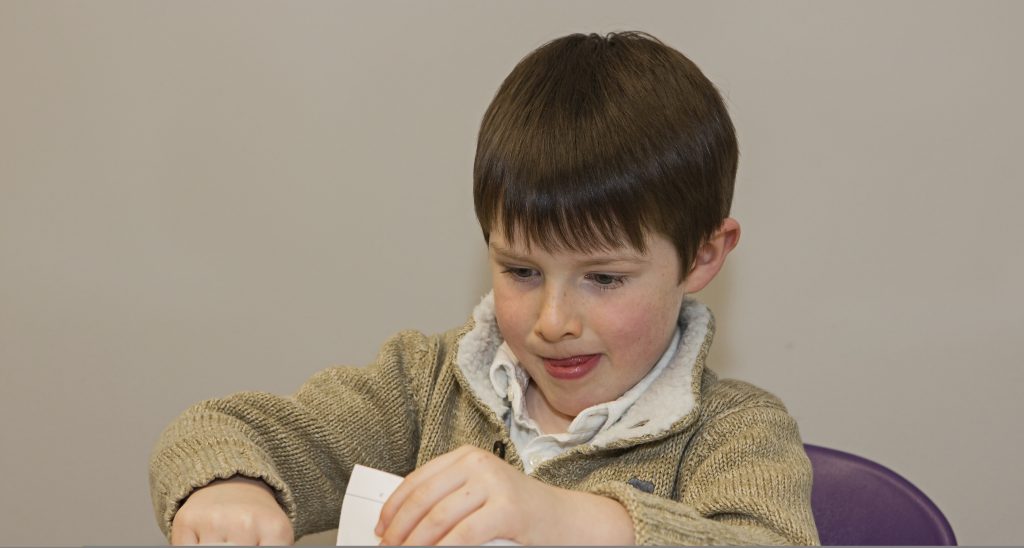 Hands-on learning has become an important topic in education. Think back to when you were a kid—chances are, you sat through lecture and completed homework to learn a concept. While this does aide learning and a tactic that teachers still use, it is not the only tactic teachers use today. Hands-on learning is not a new concept in education, but it is becoming a more popular method in today’s schools. 21st century learning and college and career-readiness has become the main new focus in education. Students need to have problem-solving abilities and critical thinking skills in order to navigate the modern world.
Hands-on learning has become an important topic in education. Think back to when you were a kid—chances are, you sat through lecture and completed homework to learn a concept. While this does aide learning and a tactic that teachers still use, it is not the only tactic teachers use today. Hands-on learning is not a new concept in education, but it is becoming a more popular method in today’s schools. 21st century learning and college and career-readiness has become the main new focus in education. Students need to have problem-solving abilities and critical thinking skills in order to navigate the modern world.
What is Hands-On Learning?
Hands-on learning is certainly not a new concept, but it has been modified to fit the needs of today’s learner. For most of history, people have been learning through experiences. Most professions or skills in history have been learned through some sort of apprenticeship or experience. For instance, a novice blacksmith would often learn his skills from an experienced blacksmith, or, as a more modern example, many students took home-economics to learn sewing, cooking, etc., which involved learning through experience. Now, as we shift more towards a technology-focus world, we have placed more of an importance on thinking critically about a subject or problem. It is not enough to remember a concept anymore because information is at everyone’s fingertips—it is now important to be able to think critically about a subject: to question, evaluate, and critique a problem or situation.
And that’s where hands-on learning comes in. Hands-on learning involve activities where students can study through a physical activity rather than a classroom lecture. They try to solve a real-world situation through experiential learning: problem-solving, building, teamwork, evaluating, etc. A lot of these activities focus on S.T.E.M. (Science, technology, engineering, and mathematics), as that is relevant in today’s society and future careers. Students learn through trial and error, through the experience of failing and trying something new, which ultimately enhances students’ problem-solving and critical thinking skills that are needed in today’s world.
Hands-on learning doesn’t need to be complicated. It can be as simple as constructing something with construction paper, scissors, and glue. For example, role playing or even talking through an advanced real-world problem with no correct answer are hands-on learning. Also, activities that encourage students to think outside of the box and make mistakes that they can learn from.
Advantages of Hands-On Learning
Hands-on learning can have many benefits when implemented well. First, hands-on activities cater towards the needs of all types of learners. Kinesthetic learners, people who learn better by doing something with their hands, benefit from the physical activity of hands-on learning. Auditory learners learn through discussing the problem with their peers, and visual learners can see the problem come to life with hands-on activities. Catering to different student’s needs help capture their attention and engage them, which increases learning and retention.
Hands-on learning also engages students by doing something active. Many students have trouble paying attention because of the amount of time they spend at their desks. With hands-on activities, students are able to get out of their desks, collaborate with peers, hold discussions, and even move around the classroom. A break like this is beneficial and will increase engagement in the classroom, especially if a student has difficulty paying attention.
Hands-on learning can also mimic problems students may come across in their adult lives. Teachers take concepts learned in the classroom to make them relate to the real world. In doing this, it prepares students for the future. College and career readiness is a major focus in the classroom. With increasing technology, we cannot anticipate what types of jobs there will be or what technological skills students will need for their careers; however, we can prepare them to think critically and problem solve. By offering an activity that has no correct answer and relates to the real world, students begin to think about the concept learned in the classroom at a higher level: they will begin to relate ideas in the classroom to their everyday lives.
Hands-On Learning and Our Program
At A Grade Ahead, we are constantly researching and evaluating our curriculum. We aim higher for our students, and in order to do so, we have to keep current with trends and educations. Hands-on learning is something that we decided to integrate into our program because of all of the reasons explained above. It will also add in an extra element of critical thinking and problem solving. We want our students to understand the concepts we teach to the full extent. Relating these concepts to the real world will ensure that students reach an understanding where they can evaluate, critique, and make decisions when the concept is involved.
What type of learning works with your kids? Let us know in the comments!
Becky Adams, Curriculum Manager, A Grade Ahead

3 responses to “The Trend Towards Hands-on Learning in Education”